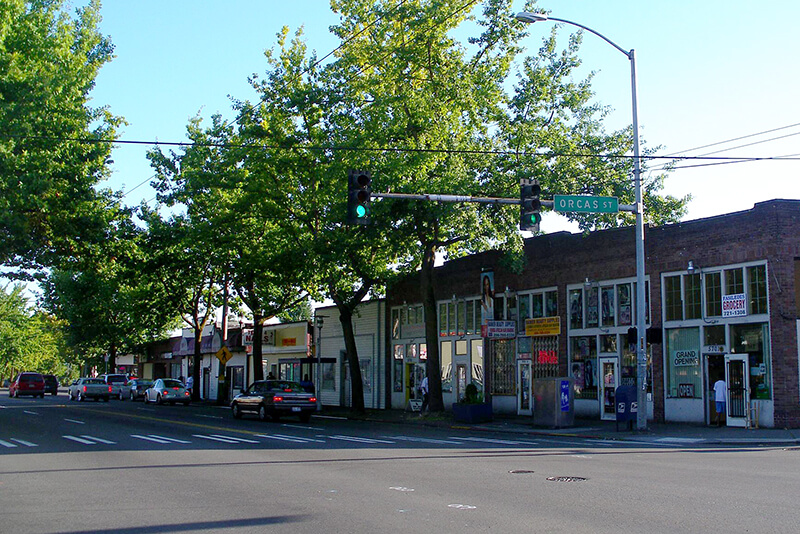This street was created in 1889 as part of the Commercial Street Steam Motor Addition to the City of Seattle. It appears to have been named for Orcas Island, largest of the San Juan Islands, which is about 75 miles to the northwest, as S Fidalgo Street appears to honor Fidalgo Island and Padilla Place S, Padilla Bay. The island’s name, per Wikipedia, derives from that of “Juan Vicente de Güemes Padilla Horcasitas y Aguayo, 2nd Count of Revillagigedo, the Viceroy of New Spain who sent an exploration expedition under Francisco de Eliza to the Pacific Northwest in 1791.” Eliza named the surrounding area Horcasitas, but in 1847 the British, who maintained their claim on the San Juans until 1871, assigned a shortened version — Orcas — specifically to the island. (It is a coincidence that Orcas Island is an excellent location for watching orca whales; the two names are completely unrelated.)
S Orcas Street begins at E Marginal Way S and goes ¾ of a mile east, then southeast, to Corson Avenue S, where it becomes S Doris Street. It picks up again east of Interstate 5 at 15th Avenue S and goes three blocks east to 18th Avenue S. Its longest and final stretch begins just west of 20th Avenue S and goes 2¼ miles east to Lake Washington Boulevard S just west of Seward Park.

Born and raised in Seattle, Benjamin Donguk Lukoff had his interest in local history kindled at the age of six, when his father bought him settler granddaughter Sophie Frye Bass’s Pig-Tail Days in Old Seattle at the gift shop of the Museum of History and Industry. He studied English, Russian, and linguistics at the University of Washington, and went on to earn his master’s in English linguistics from University College London. His book of rephotography, Seattle Then and Now, was published in 2010. An updated version came out in 2015.